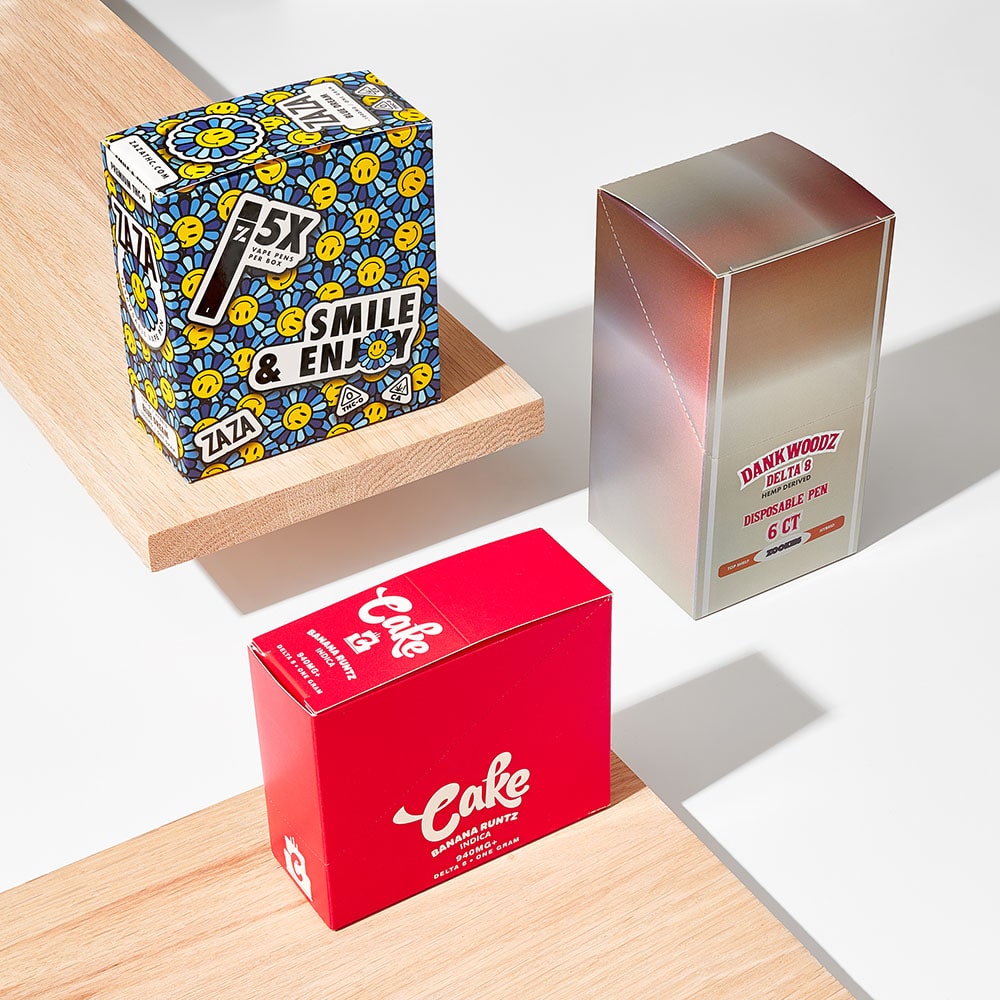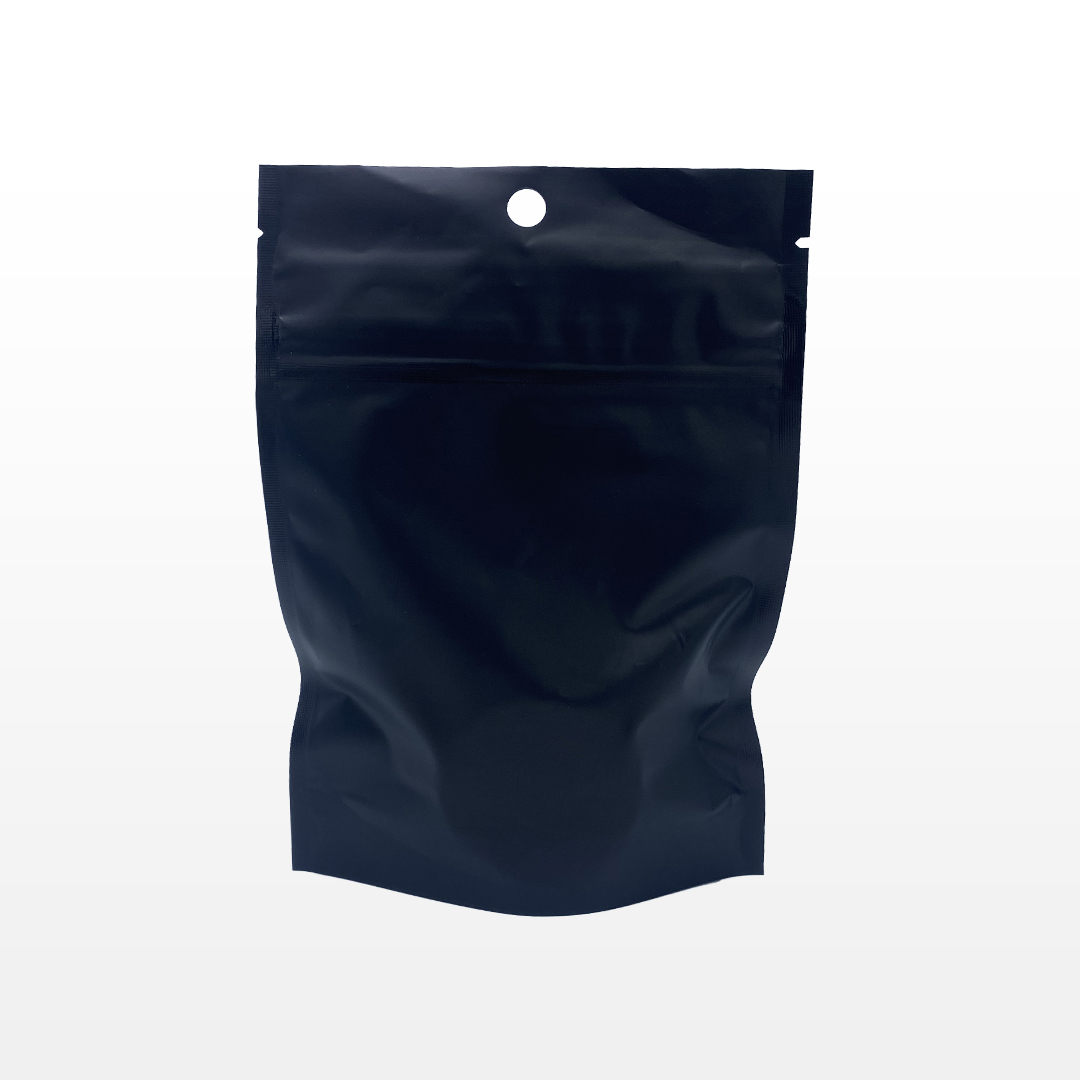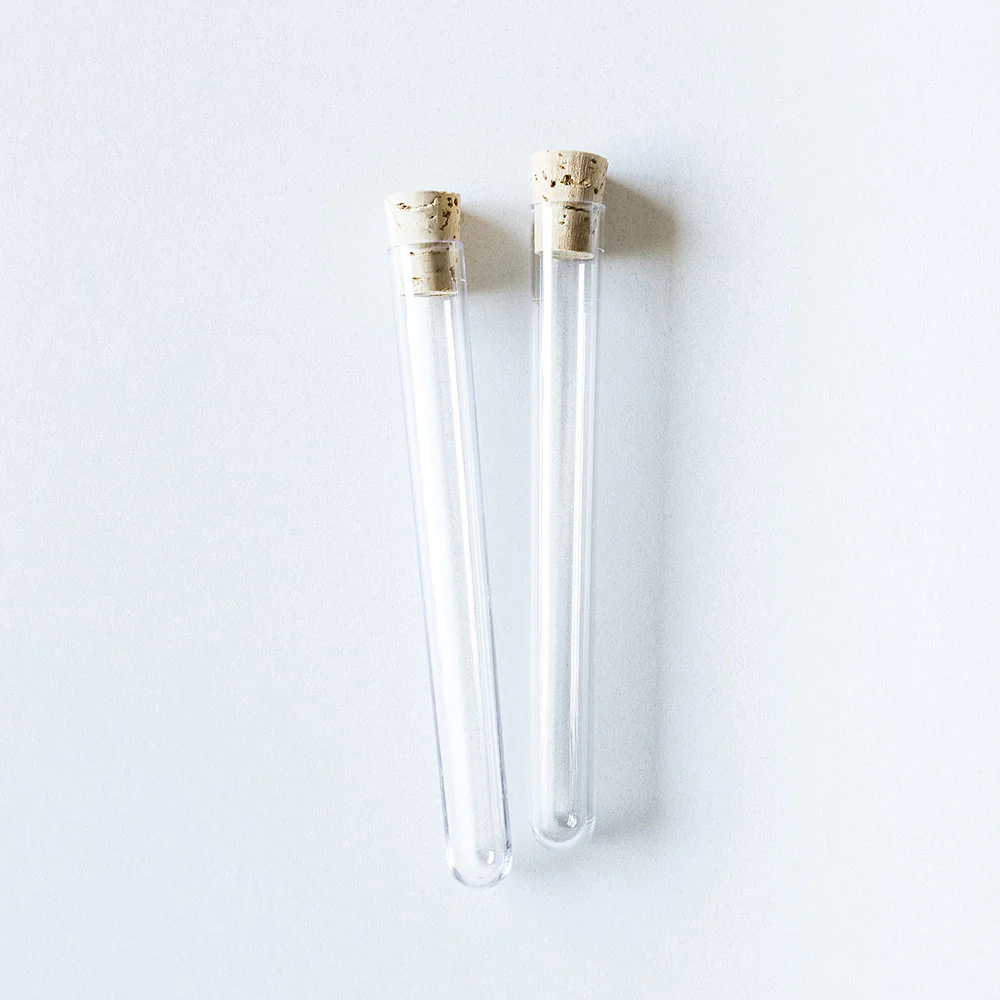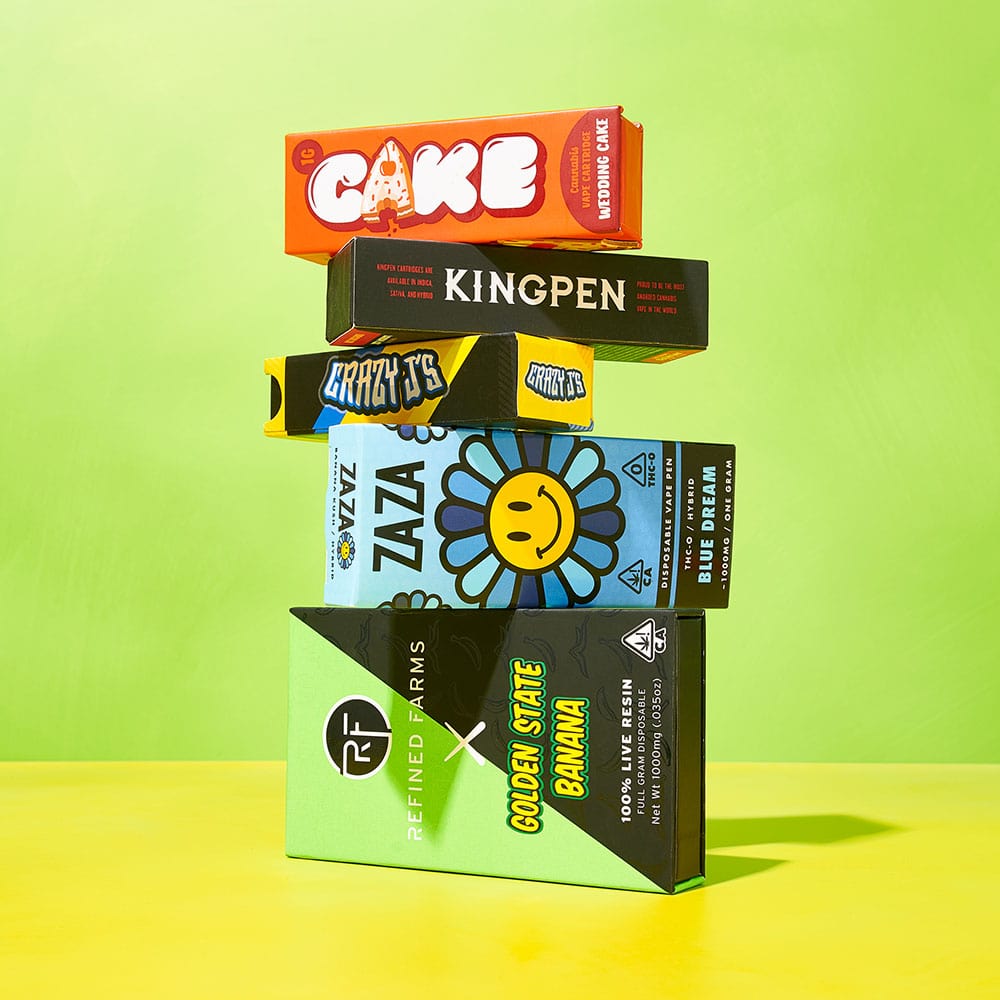No products added!
With the increased acceptance and usage of cannabidiol (CBD) products across the United States, regulatory authorities like the Food and Drug Administration (FDA) have implemented compliance regulations to ensure the safety, quality, and legitimacy of CBD products. The packaging of CBD products, like dab containers, is crucial, not just for consumer appeal but also for regulatory compliance.
The FDA currently holds jurisdiction over the marketing and packaging of all food, drug, and cosmetic products in the U.S. For CBD products, the regulations can be complex and multifaceted, as they fall under the purview of various acts, including the Food, Drug, and Cosmetic Act (FD&C Act) and the Agriculture Improvement Act of 2018 (Farm Bill) (1, 2).
The FD&C Act prohibits the marketing of any drug, including CBD, that has not been approved by the FDA (1). It also prohibits the marketing of a product as a dietary supplement if it contains an ingredient that is an active ingredient in an FDA-approved drug or has been subject to substantial clinical investigation (1). This has significant implications for the packaging of CBD products, such as dab display box, as it mandates the proper declaration of CBD, its concentration, and any health claims.
The Farm Bill of 2018 effectively removed hemp from the Controlled Substances Act’s definition of marijuana, thus allowing it to be commercially grown and processed in the U.S. However, it stipulates that all hemp-derived products, including CBD, must not exceed a THC concentration of 0.3 percent (2). Therefore, CBD packaging, cartridges for example, must clearly indicate the THC level of the product to ensure compliance.
CBD packaging must adhere to the FDA’s current guidelines, including the accurate listing of ingredients, net weight, the manufacturer’s or distributor’s name and address, and the correct usage or dosage instructions (3). Additionally, any therapeutic claims made on the packaging must be substantiated by rigorous scientific evidence (4). Any unsubstantiated health claims could be considered as misbranding or misleading, which could lead to enforcement actions by the FDA.
Moreover, the FDA mandates that CBD packaging must not appeal to children, both in terms of design and accessibility. Packaging design should not be colorful or have animated characters that might attract children, and it must be child-resistant (5).
The FDA is continually evaluating its stance on CBD products, and companies should be aware of potential future changes to the regulatory landscape. For instance, the FDA is currently conducting research to determine if it should establish a maximum dose for CBD products (6).
While the CBD market continues to grow rapidly, it is crucial that manufacturers and distributors stay abreast of the evolving regulatory landscape to ensure compliance. Adherence to FDA regulations not only ensures the safety and legitimacy of the product but also protects businesses from potential legal consequences. It is also important to remember that each state may have additional requirements for CBD packaging, like clamshells, and these must be adhered to in addition to FDA regulations.
State Guidelines
In addition to these federal regulatory requirements put in place by the Food and Drug Administration, each state has their own legislation regarding hemp and CBD. Although many CBD products do not get approved by the FDA, local markets are still flourishing thanks to state laws. However, this does not mean that CBD sales are still in a “Wild West” era. Certainly, state restrictions on CBD are loosening across the United States as more research is able to be conducted on the potential medical effectiveness of cannabidiol. However, states are becoming more comprehensive in terms of their attention to potency, product types, accessibility of packaging, and design standards.
It is vital to a cannabis business’ operations to adequately ensure they are in compliance with their state packaging and labeling regulations. These requirements will change depending on whether the product is an edible, vaporizer, flower, or topical product. In many states, cannabis products are required to be pre-packaged before being placed for purchase in a dispensary. Food and edible products are particularly susceptible to regulation by local enforcement since consumable items available for market receive specific attention from these agencies.
State packaging guidelines are frequently updated to address new concerns as they arise in local industries, so it is important to stay tapped into your local cannabis legislation to ensure your team stays on top of changes before they occur. Package Bros is at the forefront of following cannabis laws and regulations to ensure we’re ahead of the curve when it comes to new requirements.
In conclusion, while the FDA continues to develop its regulatory framework for CBD products, compliance with current regulations is paramount. Producers and retailers should work with legal experts, scientists, and regulatory professionals to ensure their packaging fully adheres to FDA rules and guidelines.
While the first half of this article laid the groundwork for understanding the complex and multifaceted nature of CBD packaging regulations imposed by the FDA, let us now delve into further details. We will dissect the intricacies of labeling requirements, the process of obtaining FDA approval for new CBD products, the consequences of non-compliance, and the future of FDA regulations in the context of the CBD industry.
The Intricacies of CBD Packaging Labeling Requirements
When it comes to CBD product labels, companies must be thorough and honest. Deceptive or false claims on packaging can lead to severe penalties (7). The FDA has stringent requirements for labeling CBD products. All the elements including the product’s name, the quantity of the contents, the name and place of business of the manufacturer, packer, or distributor, and accurate information about the product’s composition must be mentioned (3).
The FDA also requires labeling to be truthful and not misleading. This means that the CBD concentration listed on the packaging must match the actual content in the product. Companies must ensure that all statements, including health claims and safety assurances, are backed by scientific evidence. Unsubstantiated health claims are a significant red flag to the FDA, as they can mislead consumers and potentially lead to harmful health outcomes (4).
FDA Approval Process for New CBD Products
For CBD products that are marketed with a therapeutic claim, they must be approved by the FDA before they can be introduced into interstate commerce. The process begins with a company submitting a new drug application (NDA), which includes data from rigorous scientific testing that demonstrates the product’s safety and efficacy (1).
The FDA’s approval process for new CBD products is rigorous and comprehensive. This ensures that all products that reach consumers have been thoroughly vetted for their safety and efficacy. However, this process can be time-consuming and expensive, which can be a barrier for smaller CBD businesses. Not many cannabidiol products make it through the Food and Drug Administration’s new drug application, resulting in lucrative market share for those that do.
The Consequences of Non-Compliance
Non-compliance with FDA regulations can result in a range of penalties for businesses. These can range from warning letters to more serious enforcement actions, such as product seizures, injunctions, and criminal prosecutions (8). These actions can have severe repercussions for a company’s reputation and financial standing. It is, therefore, crucial for CBD businesses to invest in understanding and adhering to FDA regulations.
The Future of FDA Regulations and the CBD Industry
The FDA’s regulatory approach to CBD products continues to evolve. While the agency has issued guidance and rules concerning the marketing and packaging of CBD products, it has also stated that it is actively working to develop a more comprehensive regulatory framework for these products (6).
The FDA has indicated that it recognizes the potential opportunities that CBD may offer and acknowledges the significant public interest in these possibilities. However, the agency has also emphasized that its primary focus is on protecting public health and ensuring that any marketed products, including those containing CBD, meet the FDA’s rigorous standards (1).
In conclusion, while navigating the intricacies of FDA and state level compliance can be complex, it is a necessity for any business in the CBD industry. As the market continues to grow, and consumer demand for CBD products increases, it is essential that businesses prioritize compliance to ensure they can continue to operate in this burgeoning industry.
How Can Package Bros Help You?
The world of marketing and sales is an arena where every detail counts, and the packaging of a product plays a pivotal role. Custom packaging not only protects a product but also serves as a powerful marketing tool. It is the first tangible interaction a consumer has with a brand and can greatly influence their purchasing decision. According to a study by WestRock, 68% of shoppers agreed that a product’s packaging influences their purchasing decisions (9). Let’s explore how custom packaging can elevate consumer appeal.
The First Impression
Custom packaging is often the first point of contact between consumers and a product. With the rise of e-commerce, where physical exploration of a product is not possible, the importance of packaging is further amplified. A study by Dotcom Distribution found that 40% of consumers are likely to make repeat purchases from an online retailer with premium packaging (10). Unique, attractive packaging can immediately capture a consumer’s attention, contributing to a lasting first impression.
Brand Identity and Recognition
Consistency in design elements such as color, typography, and logo placement across all packaging and product lines can help in establishing a strong brand identity. Brands can use packaging to tell their story and express their values. For instance, eco-friendly packaging can echo a brand’s commitment to sustainability. A research report by Smurfit Kappa found that 75% of consumers are significantly influenced by a brand’s environmental footprint (11). Therefore, using sustainable custom packaging can enhance brand recognition and appeal to eco-conscious consumers.
Customer Experience and Loyalty
Packaging can offer an unforgettable unboxing experience. A memorable unboxing experience can increase customer satisfaction and stimulate social media sharing, which can lead to increased brand exposure. A survey conducted by Dotcom Distribution found that nearly 40% of consumers are likely to share a product image on social media if it comes in a unique package (12). Also, custom packaging can increase customer loyalty by making customers feel valued and providing a personal touch, such as a handwritten thank-you note.
Promoting Product Information and Quality
Custom packaging also allows for the effective communication of important product information. Clear, well-structured information about the product can assist consumers in making informed purchasing decisions. Moreover, packaging can be a reflection of product quality. In a survey, 55% of online shoppers stated that they would pay more for a product packaged sustainably, associating better packaging with better product quality (1).
There is a fine line between compliance and attractive packaging that many brands fail to accurately walk. Without proper graphic design skill and consumer input, it is easy to fall into the pitfall of packaging that meets legal standards but has no appeal to purchasers. Now that consumers are starting to see these cannabidiol products in markets catering towards the general public, such as grocery stores, it is crucial for brands to establish their target audiences and develop packaging that appeals to those groups.
Here at Package Bros, all of our products are Child Resistant certified so that you can rest easy knowing your goods are in the right hands. We have helped clients succeed in numerous states and are ready to get you attractive and affordable packaging. Our in-house graphic design team specializes in creating a brand from start to finish, so no matter where you are in your journey Package Bros can take you to the next level. We are proud to offer everything from mylar bags and point of sale displays to pre-packaged and Child Resistant goods. Our high quality products directly from reputable manufacturers combined with attractive design work will ensure that your products shine wherever they are.
Start exploring the possibilities today and elevate your cannabis brand with Package Bros, call us today!
References:
- U.S. Food and Drug Administration. (2021). FDA Regulation of Cannabis and Cannabis-Derived Products, Including Cannabidiol (CBD). Retrieved from https://www.fda.gov/news-events/public-health-focus/fda-regulation-cannabis-and-cannabis-derived-products-including-cannabidiol-cbd
- U.S. Department of Agriculture. (2018). Agriculture Improvement Act. Retrieved from https://www.ams.usda.gov/rules-regulations/farmbill-hemp
- U.S. Food and Drug Administration. (2020). Labeling & Nutrition. Retrieved from https://www.fda.gov/food/food-labeling-nutrition
- U.S. Food and Drug Administration. (2021). Warning Letters and Test Results for Cannabidiol-Related Products. Retrieved from https://www.fda.gov/news-events/public-health-focus/warning-letters-and-test-results-cannabidiol-related-products
- U.S. Consumer Product Safety Commission. (2021). Poison Prevention Packaging: A Guide For Healthcare Professionals. Retrieved from https://www.cpsc.gov/Safety-Education/Safety-Guides/General-Information/Poison-Prevention-Packaging-A-Guide-For-Healthcare-Professionals
- U.S. Food and Drug Administration. (2021). FDA’s Role in CBD Research. Retrieved from https://www.fda.gov/news-events/fda-brief/fda-brief-fda-advances-work-related-cannabidiol-products-focus-protecting-public-health-providing
- U.S. Food and Drug Administration. (2020). What You Need to Know (And What We’re Working to Find Out) About Products Containing Cannabis or Cannabis-derived Compounds, Including CBD. Retrieved from https://www.fda.gov/consumers/consumer-updates/what-you-need-know-and-what-were-working-find-out-about-products-containing-cannabis-or-cannabis
- U.S. Food and Drug Administration. (2021). FDA and Cannabis: Research and Drug Approval Process. Retrieved from https://www.fda.gov/news-events/public-health-focus/fda-and-cannabis-research-and-drug-approval-process
- WestRock. (2016). Packaging Matters. Retrieved from https://www.westrock.com/en/insights/packaging-matters
- Dotcom Distribution. (2016). Unwrapping the Experience. Retrieved from https://dotcomdist.com/2016-eCommerce-Packaging-Study/
- Smurfit Kappa. (2021). Sustainability and Profitability. Retrieved from https://www.smurfitkappa.com/us/insights/2021/2/sustainability-and-profitability
- BigCommerce. (2020). Shipping and Fulfillment. Retrieved from https://www.bigcommerce.com/dm/shipping-and-fulfillment-statistics/



